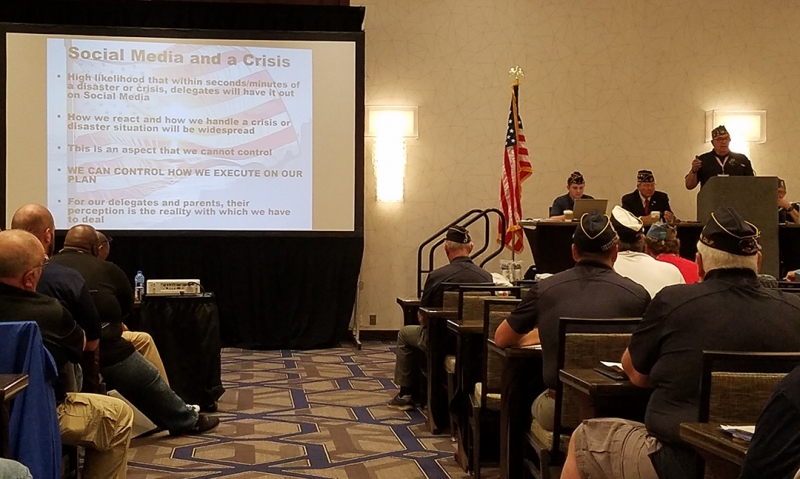
Presentations at 83rd annual American Legion Boys State Directors Conference emphasize the need to have a crisis response plan in place.
The American Legion’s Boys State programs have fortunately not had to face a major critical incident.
But given the nature of the world today, it’s important for each program to have a critical incident plan in place — not only to keep individual Boys State programs safe but to ensure that the program nationwide is not left flat-footed if something does happen.
“If something happens in the smallest (Boys State) program … within hours, the media will be at our doorsteps (elsewhere),” Tim Aboudara, chief counselor at California Boys State, said Saturday at the Boys State Directors Conference in Indianapolis.
Aboudara and California Boys State city counselor Nathan Rice — who’s also a police officer at California State University Sacramento, which hosts the California Boys State program — discussed their program’s critical incident response plan and some of the lessons they learned Saturday morning at the conference. Aboudara emphasized that the presentation wasn’t aimed at telling other programs what to do, but “to provoke some thought, to get you thinking, so again, you don’t wake up one morning and you’re dealing with a crisis.”
While conceding that it’s impossible to be completely prepared for every eventuality, Rice said, “If we know what our potential risks are and we plan for them, we’re able to minimize the impact on any of the campuses or locations where we’re going to be.” He showed a map of the Sacramento campus, which is bordered by the American River, a potential flooding risk, and train tracks. And he noted that, with many Boys State programs taking place on college campuses in May and June, there are opportunities for potential crises in the form of protests or other demonstrations.
He also emphasized the difference between disasters, such as fires and earthquakes, and crises such as shootings and attempted suicides.
Rice said it’s important for Boys State staff members to “know what your (response) plan is, what their role is, and how to implement that.”
And it’s critical to be aware of how teens react to their changing lives, which can serve as stressors and create crises.
“We need to be aware that their lives are different than what our lives were when we were young,” Rice said. “We need to figure out what they’re experiencing, what they’re going through, and how can we address that and support them.”
It’s also important to consider the impact social media can have on the perception of how a Boys State program handles a crisis, Aboudara said.
“If we have an incident, the world is going to know about it before we’ve even started to get our arms around the situation (because of social media),” Aboudara said. “… How we conduct ourselves is going to impact the perception of the outside world, and our parents of our delegates, and the future support we get for it.”
Louisiana Boys State operations manager Micah Scott also addressed disaster preparation by presenting on his program’s citizen disaster management activity. A scenario takes place in which a hurricane is headed toward the state, forcing the Boys State citizens to prepare for the storm and deal with its aftermath.
Other presentations by Boys State departments at the conference included Missouri on the importance of data and information management; Louisiana on providing an immersive educational curriculum; Kentucky on using awards and recognition to boost the morale of volunteers and alumni; South Carolina on ensuring a diverse and inclusive Boys State delegation; and Wisconsin on training and transitioning staff.
- Boys Nation

